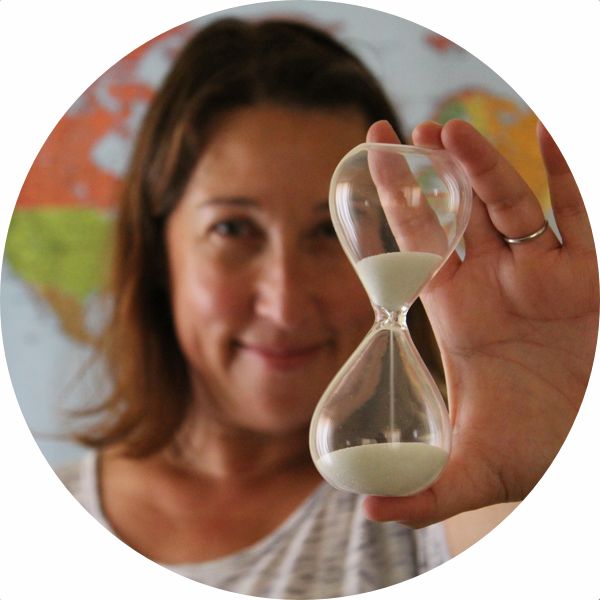A Not-So-Boring (hopefully) lesson on Barcelona's Jews
One area I wanted to explore during our travels is Judaism. As an Ashkenazi Jew, I had little exposure to Sephardic Judaism beyond a tasty spinach mina recipe from my mother that is a mainstay of our seder (yes, recipe available by request).
But I have always been fascinated with Sephardic Judaism, and, as I was looking for a way to connect with Spain during Passover, I stumbled onto Sephardic Food, a site run by the brilliant Janet Amateau. A New York native, she moved to Spain in 2005 to further explore her Sephardic roots through its food and culture. Her site spoke to me in a way that so few sites do, through food, culture, and history.
So I was very happy we had the opportunity to take an amazing tour through the old and new Jewish quarter of Barcelona with Janet. Her tour was fantastic, She brings a scholarly and passionate approach that is inspiring, and I highly recommend it to anyone, regardless of religion. To capture even a portion of everything she shared would never do our talk justice, so instead, I will share a few highlights to whet your appetite.
A short distance away from the world-famous La Boqeria Market in the heart of Barcelona is where the old Jewish quarter was first established. Some evidence estimates this from the beginning of the Common Era. For many centuries, Jews prospered in this quarter, managing their own affairs, ranging from serving as butchers to study of the Torah. This coincided with the “Golden Age” for Jews in Spain when some of the most valuable Jewish texts were written and Jews contributed to geography, medicine, mathematics, and philosophy. While there were occasional outbursts of anti-semitism, it was a time in which Islamics, Jews, and in most regards, Christians, lived in relative harmony and even partial Jewish autonomy.
However, it should be noted that some scholars believe this Golden Age to be a myth. After seeing the synagogue in Toledo and evidence that Jews were the leading scholars and scientists of the time, I believe it was an age of tolerance for Jews of the Iberian Peninsula.
Not much physically still exists from this time. However, through a mixture of storytelling and her research, Janet was able to show us some amazing remnants painting a picture of this time.
We walked into a store she jokingly referred to “what Anthropology wishes it could be.” In the back, it felt damp and she pointed out this was the location of the mikvah, which is a ritual bath (mikvah literally means “collection of water”) found inside a bathhouse.
One of the quarter's narrow streets turns at an odd angle at one point. This is where the quarter’s former synagogue can be found. It was originally built during the fifth century, then a new synagogue was built on top of it in the fourteenth century with additional floors added in subsequent centuries. Despite perhaps being the oldest synagogue in Europe, it was forgotten and abandoned until the twentieth century. It's now a museum and a working sanctuary. For a small fee they offer English-language tours, providing a nice summary of the synagogue and the quarter.
Jews prospered and were generally accepted under Roman, Visigoth, and Muslim rule (and even under early Christian rule), but things began to change in the thirteenth century.
The thirteenth century was marked by the reconquest of Spain by the Catholic Church. After the Crusades, the presence of Muslims in what they considered Christian land could no longer be tolerated. Thus began the process of driving the Muslims out of Spain. This clearly had negative repercussions for the Jews, an unfavorable minority standing in the way of a complete Catholic conquest. One of my favorite stories that brings this change to life is what would be called “the Great Debate.”
In the court of King James I of Aragon was a man named Pablo Christiani. He was a Jew, but converted to the Roman Catholic church, and was called Friar Paul in the church. Jews of the time were very learned since they could read the Torah and write. Growing up Jewish, Friar Paul was no exception and came to the King with a proposal. He believed that since he knew the Torah and the truth of Christianity, he could prove the falsehoods of Judaism, which would convince all the Jews to convert. Furthermore, he would prove this in a debate with Rabbi Moses ben Nachman (known as Nachmanides) the great Jewish sage, scholar, and leader of Spanish Jewry.
As a devoted Roman Catholic, King James not only agreed with this plan, but said he would serve as debate judge. Held in Barcelona, not far from the Jewish quarter, the Rabbi and Friar engaged in four days of hated and passionate debates.
In the end, King James sided with Nachmanides and famously stated that he had never heard someone argue so well for such an unjust cause.
While a victory for the Jews, it was a temporary one. Nachmanides either wrote down his argument or shared it after the debates (it is unclear which he did), but since this was outside the parameters of debate itself, his words were considered blasphemy and he was forced to leave Spain. He eventually went on to settle in the Land of Israel.
By the fourteenth century, the Catholic Church strengthened its hold on Spain and anti-Semitic laws were enacted. When the Black Plague swept through Barcelona and very few Jews died (due to the kosher laws which helped prevent the spread of disease, and the presence of cats in the Jewish quarter that kept the plague-infected rats and flies at bay), a series of riots broke out and most of the Jews in the quarter were killed. Those that remained were forcibly converted. While the "official" Jewish expulsion did not occur until 1492, by the end of the fourteenth century the Jews of Barcelona were gone.
For those that converted, there are still signs of the Judaism they practiced secretly. Jewish women who joined the convents brought their recipes with them. To make money, many of the nuns began making and selling cookies and to this day, you can purchase delicious cookies made by cloistered nuns throughout the country. While they incorporated non-kosher ingredients to reduce any suspicions about their religious origins, at their heart, many of the cookies still baked today are allegedly Sephardic recipes.
As mentioned earlier, only small fragments of physical artifacts remain from that time. During our visit in Barcelona, we were lucky enough to see an exhibition of illuminated haggadas, making their first return to Spain in more than 600 years after being smuggled out of the country during the explosion of the Jews. The hagadda exhibition at the Barcelona History Museum continues until July 5th, 2015.
While the history of Sephardic Jews and those in Barcelona is tragic, there is a bit of a happy ending. To atone for the country’s actions six centuries ago, the Spanish government is currently working on a law that would grant Spanish citizenship to those whom can prove lineage to exiled Jews. With hundreds of thousands, and possibly millions, of Sephardic Jews worldwide eligible for citizenship, it is an exciting chapter in the long, complicated history of Sephardic Jews.
Here’s hoping for another Golden Age, and one that will last.
Note: This post is based on the author's notes and recollections of an incredibly rich tour. To capture Janet's words perfectly require a skill beyond mine. Therefore, to fill in holes, some internet research was done which may not sync with Janet's research. Therefore, any mistakes in this blog post are mine and mine alone and I apologize for any attributions made in error.

No matter where she is, Samantha can be found searching blogs for new places to eat, best street food, and great recipes.







